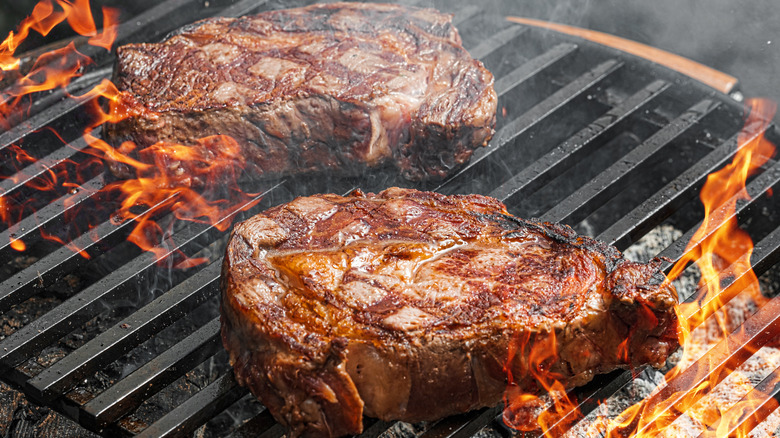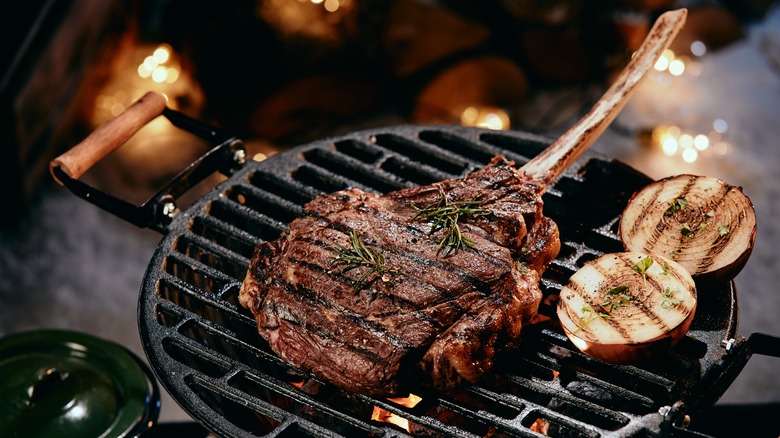Why It Pays To Flip Your Steak Often On The Grill
Steaks are juicy, packed with melted fat, and oh-so-tender. Compared to chicken and pork, there are so many cuts of steak to choose from. Feeling fancy for the evening? Go with a filet mignon or a porterhouse. Won the lottery? Buy that tomahawk steak. On a budget? No problem, because sirloin and strip steaks will always be there for you, per My Chicago Steak.
Whichever meaty route you embark on, most steaks are happy to sear on a grill and show their appreciation with beautiful grill marks that rival those of high-end steakhouses. Smithsonian Magazine states, " ... the heat of the grill breaks the meat's fatty acids into smaller molecules that are more volatile ... These volatiles are responsible for the steak's aroma, which accounts for the majority of its flavor." Translation: grilling steak helps it smell better, which makes it taste better. Science World backs this up by explaining that taste is 80% of how food smells to us.
But when it comes to grilling steaks, many home cooks believe in the one-flip method. That is, just flipping the steak once and calling it a day. But what happens when you flip a steak multiple times?
Much quicker cooking
Feeling impatient and pained with hunger? Try the frequent flipping method. This will result in quicker cooking times and steaks that have an even cook, as noted by Serious Eats. The site explains that the more you flip your steak, the less chance it has to cool on the exposed side. In other words, flipping your steak often keeps the temperatures hot and even on both sides. Furthermore, frequent flipping will result in a cook time that Serious Eats states is 30% quicker than flipping it only once. And in terms of how often you should flip the steak, food scientist Harold McGee recommends one flip every 60 seconds should do the trick.
The former source also explains that constantly flipping a steak will make it cook evenly on the inside. During an experiment, Serious Eats found that flipping a steak just once resulted in a gray ring between the outer edges and the center. On the other hand, the frequent flipping method didn't show as many gray areas and the pink center was much more uniform throughout the inside of the meat.
If you're worried that a seared crust won't be able to form with this method, cookbook author Adam Perry Lang (via Kitchn) fixes this with a simple herb brush, which he uses to baste the steak multiple times per side. Think of this as slowly layering on a crust after every flip so you can get those textural contrasts that make steaks so irresistible.

